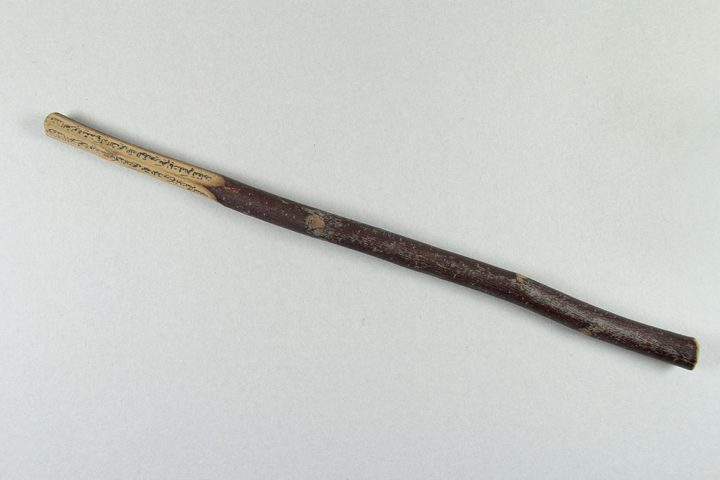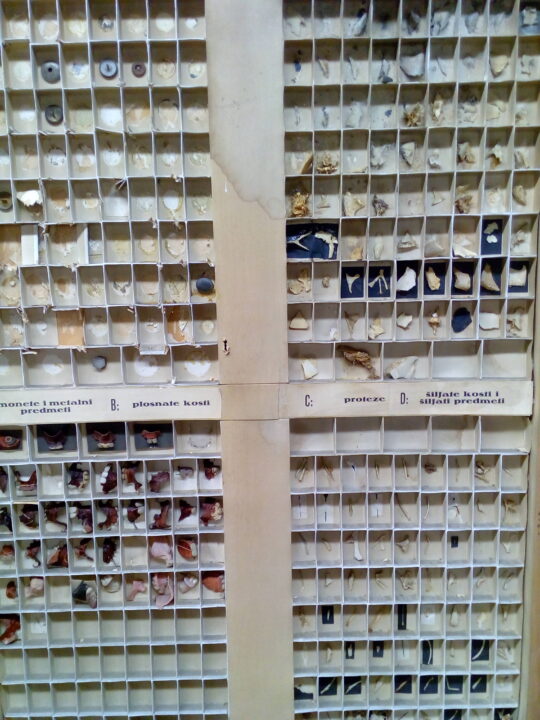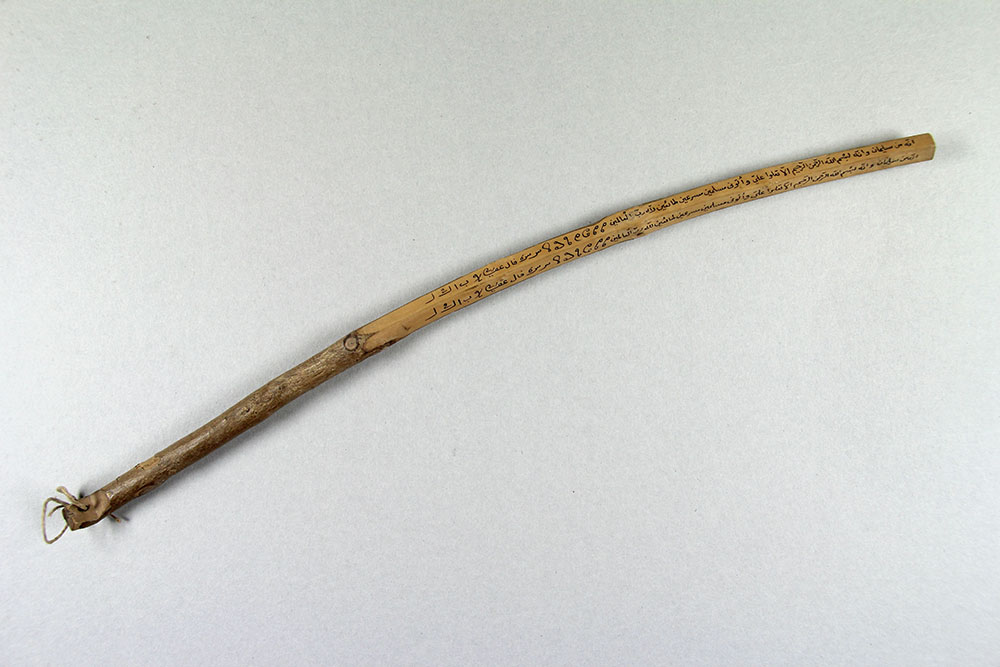
Wand for pain relief, Bihać, the beginning of 20th c., handwriting, wood, lenght 39 cm, Ø 1 cm, HMMF-585
The wand is mostly peeled and square shaped, on the surface are arabic inscriptions in ink. At the bottom there is a rope attached. The item was obtained by the first curator of the Museum of the History of Health at the Croatian Physicians Association Stanko Sielski (in Bosnia, where he served as an epidemiologist) who sent in a letter to Vladimir Ćepulić an adjacent note written by Muhamed Garčević from the museum in Banja Luka:
When certain marks or various pains appear on the body, one should cut a wand from Džanarika, on Friday before the sunrise, and straighten it on the four sides, and on each side, write 74th section 2nd gog of the Kur’an chapter. The written section should be studied 40 times and after that with hit a little with wand to the painful place, the pain will stop. This method of curing can also be used in animals. (recommended by Imami Temimi, a famous Islamic scholar who has written several works on the effects of various Kur’anic sections on certain diseases).
Source: Archives of the Department of History of Medical Sciences of the HAZU. Correspondence Sielski – Ćepulić, a letter sent to Ćepulić dated March 30, 1943, an attachment with legends.
Bibl.: Narodna medicina, Etnografski muzej, Zagreb, studeni 2001. – ožujak 2002. / [authors of the catalogue and exhibition] Aida Brenko, Željko Dugac, Mirjana Randić. Zagreb : Etnografski muzej, 2001., p. 131.
On the small area the wand is peeled and squarely shaped, on that surface are arabic inscriptions in ink. The wand with arabic inscriptions for exorcism of Šejtan from the possesed was used by Šejtan-hodža’s in the Bihać surroundings in the beginning of the 20th century.
The item was obtained by Stanko Sielski in Bosnia who sent in a letter to Vladimir Ćepulić an adjacent note written by Muhamed Garčević from the museum in Banja Luka:
When someone is crazy, you need to take one stick from a bitter šip and straighten it at the top on the four sides. One should write on all four sides, 31 passages from the 27th Qur’anic chapter of NEML, and other tilsims, which are also written on the stick. The stick inscribed in this way should be censed with Ud-agača (a fragrant tree that is brought from Ćaba, a holy place). Learning a special prayer one should hit the patient with a wand and the Gin will be burned (the belief is that the Gin enters a crazy man).
Source: Archives of the Department of History of Medical Sciences of the HAZU. Correspondence Sielski – Ćepulić, a letter sent to Ćepulić dated March 30, 1943, an attachment with legends.
Bibl.: Narodna medicina, Etnografski muzej, Zagreb, studeni 2001. – ožujak 2002. / [authors of the catalogue and exhibition] Aida Brenko, Željko Dugac, Mirjana Randić. Zagreb : Etnografski muzej, 2001., p. 131.
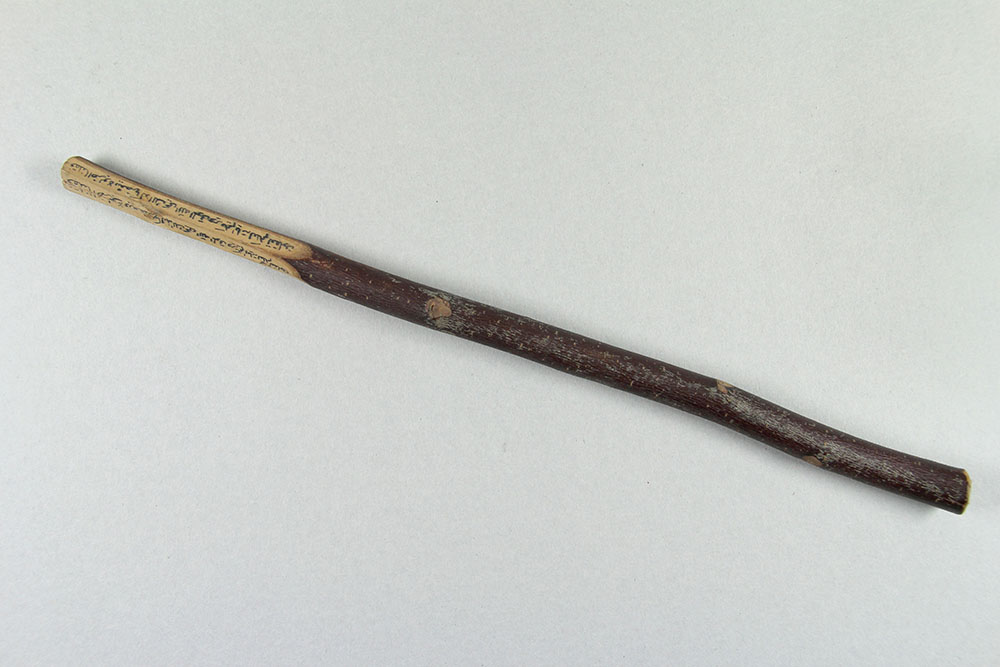
Wand for exorcism (exorcism against Šejtan), Bihać, the beginning of 20th c., handwriting, wood, lenght 33,4 cm, Ø 1,4 cm, HMMF-586
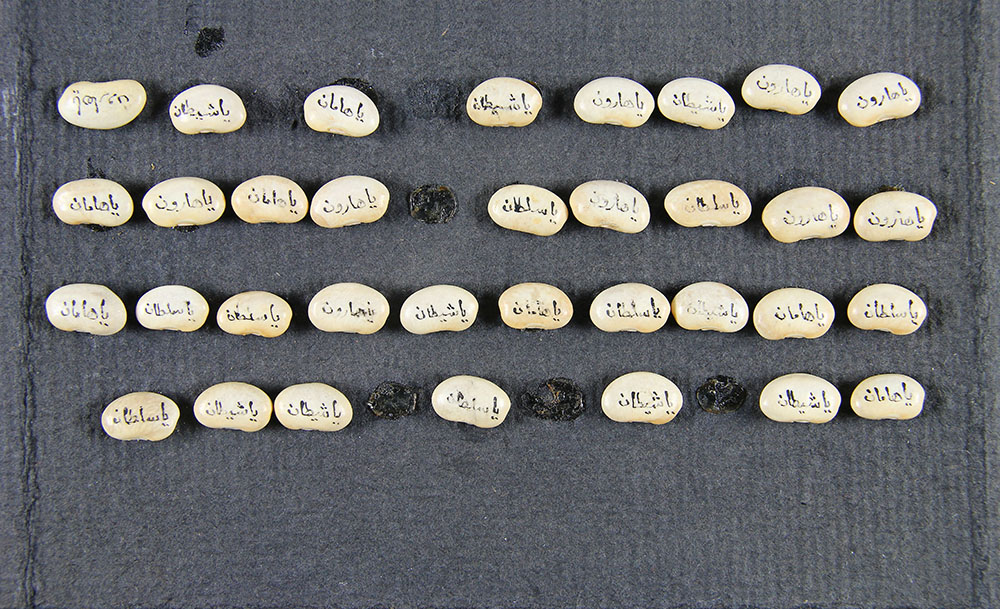
Love charms, beans for magic ritual, Bosnia and Hercegovina, the beginning of the 20th c., HMMF-615
The item consists of 36 grains of beans that have names in arabic inscribed with black ink. The item was obtained by Stanko Sielski from the acquaintance Garčević in Bosnia for the Museum of History of Health at the Croatian Physicians Association. Sielski wrote on a note: Love charms. The names are thrown into the fire (10 pieces) while saying: “As this bean burns so X burns for me. I am a sultan. I am haman. I am harun. I Šejtan.“
Source: Archives of the Department of History of Medical Sciences of the HAZU. Correspondence Sielski – Ćepulić, an attachment to letter sent to Ćepulić dated April 6, 1943.

